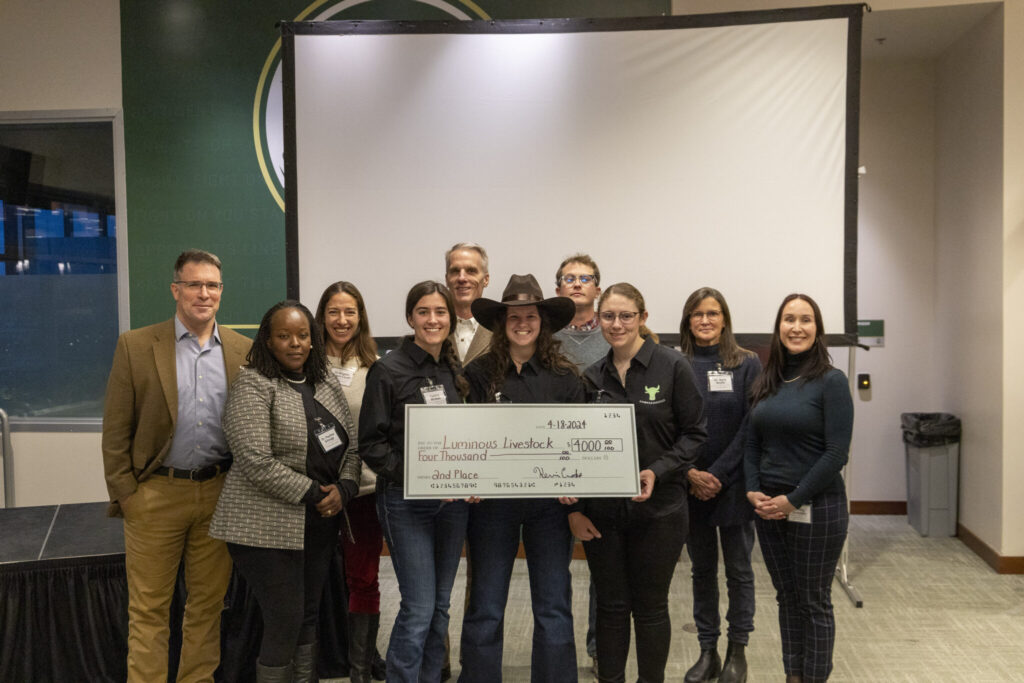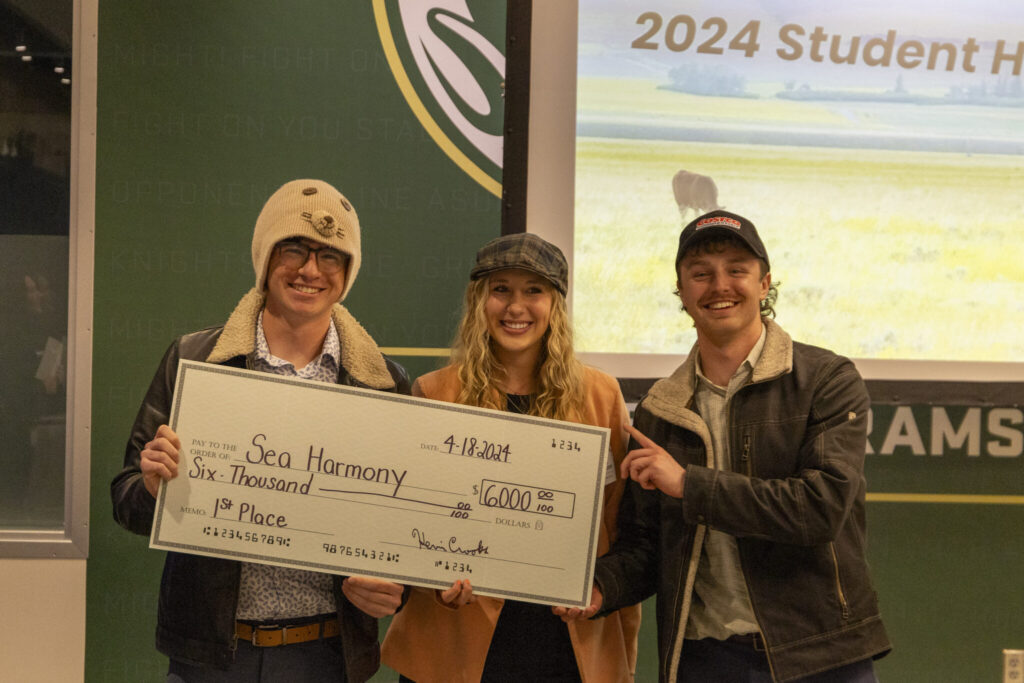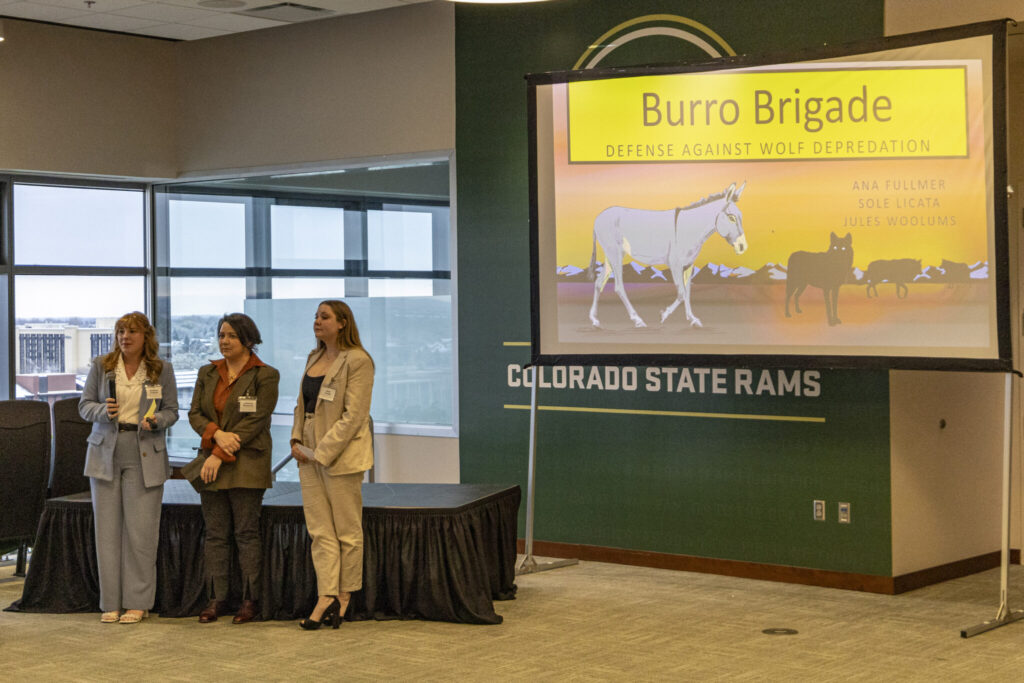
Undergraduate students across CSU recently competed to offer solutions to the environmental wicked problem of human-carnivore coexistence in agricultural landscapes. In its inaugural year, the Handprint Challenge competition was held on Thursday, April 18 and hosted by CSU’s Center for Human Carnivore Coexistence in collaboration with the One Health Institute. The event was supported by the Warner College of Natural Resources Dean’s Award for Transdisciplinary Approaches to Environmental Wicked Problems.
Human-carnivore coexistence is a global challenge with an urgent need for real-world solutions. Reducing conflict between people and predators in agricultural systems demands transdisciplinary approaches, which combine knowledge from academia with knowledge from practitioners and local communities to tackle pressing ecological, social, economic and political challenges.
The Handprint Challenge presented an experiential learning opportunity for undergraduate students to form cross-campus teams to develop creative solutions to the issue of human-carnivore coexistence. To foster transdisciplinarity, student teams were required to include three undergraduate students from at least two different colleges. Teams were also required to emphasize collaboration with a variety of stakeholders so their proposed solution would entail co-production of knowledge that could be translated to real-world action.

At the competition, six finalist teams, selected from a large pool of proposals, presented their projects in a “Shark Tank” style presentation to an interdisciplinary panel of expert judges. Student teams represented seven different colleges across CSU, and winning teams received cash prizes.
A prize of $6,000 was awarded to the winning team, which included Shelby Gabrielson and Andrew Trathen from the College of Business and Gunnar Tribelhorn from Warner College. The team tackled the issue of predation by gray seals in commercial salmon farms in Scotland, proposing acoustic deterrents to repel seals and trapping and relocating seals away from salmon pens.
“By incorporating the unique abilities of individuals trained in disciplines outside of natural resources, such as the human connection skills exhibited by business managers, the implementation of coexistence-based solutions can be made more effective,” said the winning team.
The second-place team received a $4,000 prize and consisted of Katie Tucker and Kate Moseley from Warner College and Caitlin McNeil from the College of Veterinary Medicine and Biomedical Sciences. The team proposed a business (“Luminous Livestock”) to develop and market a glow-in-the-dark pigment – called “Illu-moo-nate” – to apply to livestock to prevent attacks by predators.
“The Handprint Challenge allowed us to explore outside of our areas of study and comfort zones,” said the team. “We had the opportunity to collaborate with faculty beyond our departments and present to a diverse audience.”
Two students from Warner College and one from the College of Agricultural Sciences joined forces and took home $2,000 for third place. This group proposed a community-based program to empower small-scale farmers on communal lands in South Africa to prevent conflict between leopards and livestock.
Other competing teams developed innovative approaches to help ranchers prevent livestock depredation by wolves in Colorado and by wolves and grizzly bears in the Northern Rockies. Their solutions included using motion-activated technology and citizen science to detect and scare predators away from herds; providing livestock guardian burros to ranchers; and starting a nonprofit organization to report carnivore sightings and provide education about non-lethal conflict reduction tools.

Kevin Crooks, director of the Center for Human-Carnivore Coexistence, is helping lead the transdisciplinary team of faculty across CSU funded by the WCNR Dean’s Award. The Center received a $50,000 grant and secured matching funds from multiple units, including the College of Agricultural Sciences, College of Veterinary Medicine and Biomedical Sciences, College of Liberal Arts, Department of Philosophy, OVPR Research Acceleration Office and One Health Institute.
Mireille Gonzalez, co-director of the center, led the development and implementation of the Handprint Challenge. “The student presentations at the Handprint Challenge competition were truly inspiring,” Gonzalez said. “They reaffirmed my belief that our students at CSU are well-equipped to go on to help tackle the pressing global environmental challenges of our time, including human-wildlife conflict and coexistence.”
In his first year as the dean of Warner College, A. Alonso Aguirre used funding from Ed Warner’s generous endowment to create the Dean’s Transdisciplinary Award. Aguirre strongly believes in the need for transdisciplinarity to tackle wicked environmental problems and the importance of actively engaging the next generation of students to develop solutions to such challenges.